Howdy folks! I hope everyone is having a wonderful summer, or winter, if you're in the southern hemisphere. After wrapping up my overview of Primeval season 2, last week, I decided to do an article about an animal. As usual, I also have exciting news regarding Jurassic World, the third sequel to Jurassic Park.
Now is a great opportunity to talk about my latest stop-motion project. As you might recall, I am in the midst of my stop-motion series called "Animal Face-Off" season 2 and I'm in the post-production phase of the fourth episode: "Lion vs. Nile Crocodile". It's a really cool episode and can't wait till it's finished. As it's approximately 75% finished, I hope to upload it to YouTube on Saturday, so I'll post it onto the blog next week.
Days till:
It is: 37 days till Labor Day
It is: 47 days till Patriot Day
It is: 48 days till Dolphin Tale 2's theatrical release.
In the Spotlight
After last week's buzz, we have more exciting news about Jurassic World this week. This film will have a panel at the San Diego Comic-Con this week! We don't know when or where, but the film's director, Colin Trevorrow, confirmed Jurassic World will appear at the event, between the 24-27th of this month. I'm so stoked! I'm really hoping that there will be a teaser trailer at the event. Of course, the trailer won't show much, but it will be nice to see an official trailer at all.
 |
| This is the first official poster for Jurassic World . . . and there's a raptor! |
Firstly, the raptor in the picture doesn't appear to be the same coloration as the one leaked onto the internet a few weeks ago, which was green with black stripes. This difference in coloration could be due to the difference in genders. The one in the poster above is most likely female, as evidenced by the clutch of eggs beneath her, while the male is more brightly colored. Another possibility is that this is a different breed of raptors from the green one or maybe, the lighting in the poster only makes it look a different color.
Another thing I that got me more curious about the movie is the nest of raptor eggs. Now, it seems unlikely that this raptor is one of the dinosaurs Chris Pratt's character is conducting behavioral studies on. Why? Well, it doesn't look like it's contained! It appears to be a wild raptor. Could this be one of the raptors that was already living on Isla Nublar before Jurassic World's construction? If so, maybe that perimeter fence around the park isn't only to keep dinosaurs contained, but also to keep wild dinosaur out. This also begs the question: are there other dinosaurs outside the park boundaries? Dilophosaurus? Brachiosaurus? Troodon? Who knows?
All I know is that this movie seems like it's going to be one word: AWESOME!!! I especially can't wait to see ferocious packs of Velociraptor in action after it comes into theaters on July 12, 2015 . . . that's only about 324 days away.
In additional news, others things have taken place concerning Jurassic World: actress Courtney James Clark has joined the Jurassic World cast, Chris Pratt has finished filming all of his scenes in the movie and, as jurassicworld.org puts it, "The filming of Jurassic World is coming to an end." That in and of itself is unbelievable! Why? Well, this movie has been in production for 12 years! 12 long years! I have been waiting for this movie to come out for 8 years, when I first fell in love with one of the greatest dinosaur franchises of all time. Now the filming process is finally ending on August 6th. That's 14 days! Wow, I can't believe it. This movie is finally being made!
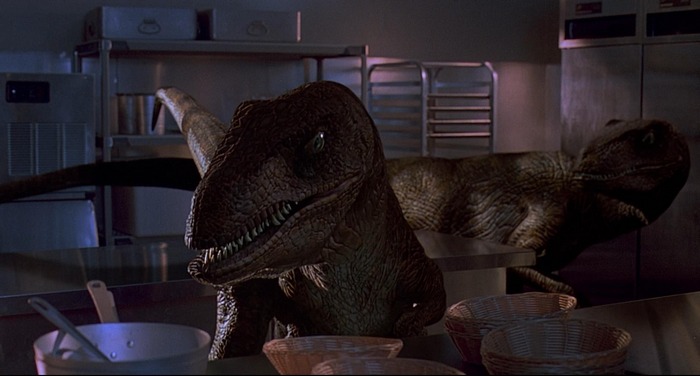 |
| 12 years after Jurassic Park III, Velociraptors will |
Topic
of the Week
by Christian Ryan
 |
| The blue wildebeest |
Though it looks a little like a cow on
a diet, wildebeest (also known as gnu due to some of the sounds they
make) are actually a species of antelope! However, they are still in
the bovidae family. Other
animals in this family are cows, antelope (obviously), goats, sheep,
buffalo and many other hoofed mammals. Did you know that there are
two species of wildebeest? There's the black wildebeest and the blue
wildebeest. When most people think of a wildebeest, the blue
wildebeest comes to mind. Blue wildebeests are larger and their horns
protrude from the side of the skull and curve downwards before
curving upwards at the tips. Black wildebeest are smaller than their
cousins and their horns curve forwards and downward before curving
upward at the tips. As their names suggest, they are also differently
colored: blue wildebeests are normally a dark gray color (sometimes
they'll have a bluish sheen, hence their name) and stripes; black
wildebeest are brown in color. Today, we'll focus on the blue
wildebeest.
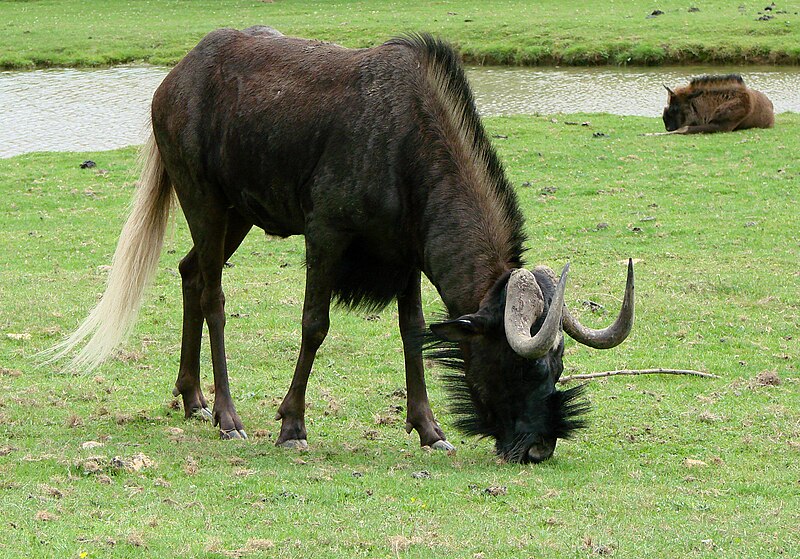 |
| The black wildebeest has different-shaped horns and is darker in color than its blue cousin. |
.JPG/800px-Streifengnu_(en._Wildebeest).JPG) |
| The blue wildebeest is the creature that comes to mind when most people think of wildebeest. |
The males of blue
wildebeest are larger than the females and are eight feet in length
and stand up to five feet tall at the shoulder. They weigh between
265-600 pounds in weight. These antelopes are herbivores and are
found throughout the open woodlands and savannas of eastern, southern
and central Africa, specifically the Serengeti in Tanzania and Kenya.
Wildebeest live in large herds sometimes numbering in their millions;
they are very gregarious creatures. You probably are already aware of
the fact that wildebeests are herbivores. They like nothing better
than to graze on lush grass in the mornings and late afternoons. The
hottest parts of the day are sometimes spent resting. Sometimes, it
can be too hot, even for a wildebeest! However, wildebeest will often
forage at night. These bizarre-looking bovids are often spotted
grazing with herds of zebra. This has many advantages: 1) zebras are
very alert animals and are likely to spot danger if it approaches. 2)
Zebras like eating the top layer of grass – the canopy – and this
exposes the lower, greener and more nutritious grass beneath, which
is what wildebeest like eating most. Cool, huh? Wildebeests often eat
a lot of grass, and in the dry season, this can mean they've stripped
the area of good grazing. When the amount of drinking water starts to
diminish, they are urged to take a migration to greener pastures.
| The wildebeest's range. |
 |
| As evidenced by this picture, zebras often congregate with herds of wildebeest. |
Not
all wildebeests migrate – black wildebeest herds and herds of
non-territorial bachelor blue wildebeest males don't migrate – but most herds of
blue wildebeest do. Once the dry season is upon them, thousands or
millions of these hoofed-mammals migrate northward toward the smell
of fresh, well-watered grass; the migrations normally take place in
May or June. This is a grueling journey of about 500-1,000 miles
round trip each year – the longest migration of any land animal.
The migration begins soon after calving, when another marvel of
nature takes place: did you know that 80% of wildebeest calves are
born in the same two or three week period. This makes it impossible
for predators to eat all the babies, therefore ensuring survival of
their species.
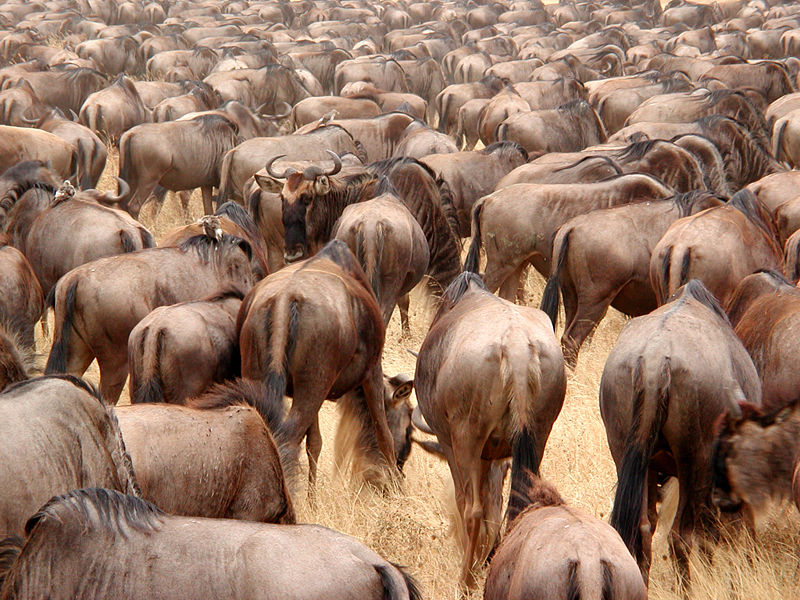 |
| Wildebeest will travel 500-1000 miles every year in search of fresh grazing. |
Wildebeest show
much perseverance in their search for fresh grazing and drinking
water. It's a dangerous journey too: calves are often picked off by
predators such as jackals and even baboons. This is why God designed
the young of bovids to be able to walk and run soon after birth – a
baby wildebeest is able to stand within six minutes of birth, walk in
thirty minutes and can outrun a hyena within that same day! It's also
important to note that female wildebeest typically give birth in the
middle of the day, when predators are least active. 80% of wildebeest
calves survive their first month in large herds, while only 50%
survive in smaller herds.
Adult wildebeests have their share of
predators too: lions, hyenas, leopards and painted dogs all enjoy
wildebeest flesh and these predators will often follow and/or wait
for the wildebeest herds as they migrate. If they hunt in a small
group, cheetahs can cause a problem for wildebeest too. Wildebeests
are fast runners however, reaching speeds of 50 mph! As you may have
seen in some documentaries, wildebeest often have to cross rivers to
reach greener pastures. But there's danger in these rivers:
crocodiles – some of which might not have eaten since the
wildebeest's last migration – lie in wait. But the wildebeest have
a tactic to protect at least most of the herd when crossing
crocodile-infested rivers. When they leap into the river, they like
to cross in “swarms”, making it harder for crocodiles to pick off
an individual. Normally predators pick off the weak, young, sick or
injured members of the herds.
 |
| Baby wildebeest can walk within thirty minutes of birth! |
 |
| Wildebeest often cross dangerous waters on their migration routes. |
Even though many
wildebeest die during migration, most of then survive to reach their
destination. But when the dry season ends, it's time for the
wildebeest herd to make the other half of their journey, back to the
Serengeti, where the dangerous migration began.
In
order to keep moving to find green pastures, wildebeest must
persevere, even when it's tough and there are predators waiting
practically everywhere hoping to catch them. Did you know that God
also wants us to persevere? One that stuck out to me was Romans
12:12. It reads: “Be joyful in hope, patient in
affliction, faithful in prayer.”
The author of Romans is an important apostle named Paul (who's name
was changed to Saul after God turned his life around). Paul lived a
good life before becoming a Christian. Many people probably thought
very highly of him because he liked to persecute many of those early
Christians of the first century. However, one day on the road to
Damascus, God called Paul to be an apostle and ever since, Paul was a
man of God. Many didn't like this too much. Paul went through many
hardships as he served the Lord, even until his eventual death
because of his faith. He wrote the book of Romans when he was in
prison, and even there, he was urging fellow Christians to not give
up on serving the Lord, even when under afflictions.
As
Christians, we face many hardships. Maybe they're not as bad as the
hardships Paul faced, but they're still hardships. God wants us to
persevere and keep on doing what He wants us to do. But what does God
want us to do to serve Him? Well, there is no one answer to this, as
they vary depending on the particular person. God might want you to
witness to a particular person or do an outreach project at church.
Sometimes such activities can bring ridicule from others and in some
countries, imprisonment and death. Why should we be “patient in
affliction”? Well, another Bible verse sums this up very nicely:
Hebrews 10:36 says, “You need to persevere so that when
you have done the will of God, you will receive what He has
promised.” Just like a wildebeest, we must persevere toward
the final goal until our destination is reached. Next week, think of
some ways you can be “patient in affliction” and show
Perseverance of the Beest
for Jesus Christ!
I hope you enjoyed this article. Please be sure to subscribe to my blog, leave a comment in the comment box below and I'll see you guys next week!
References:
Disclaimer: Many (or in some
cases all) of the photographs and images above are not mine. If you
own one or more of them and would like them to be removed, politely
let me know via one or both of the email addresses above.
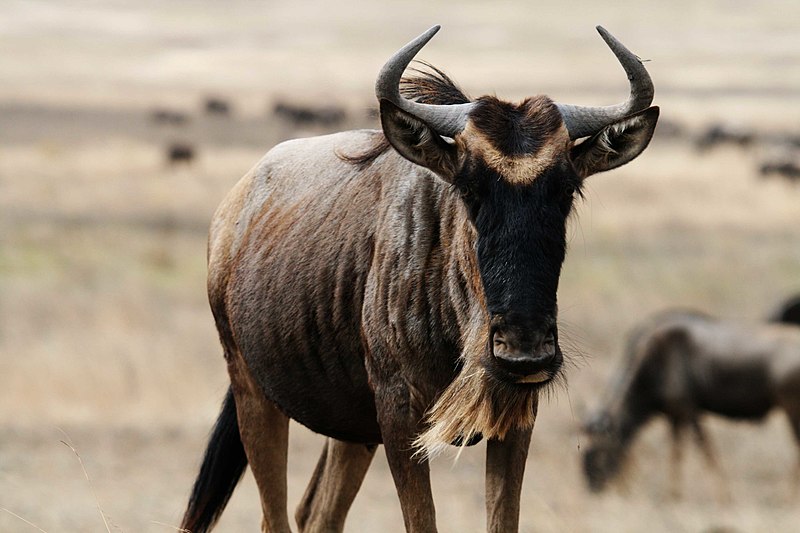
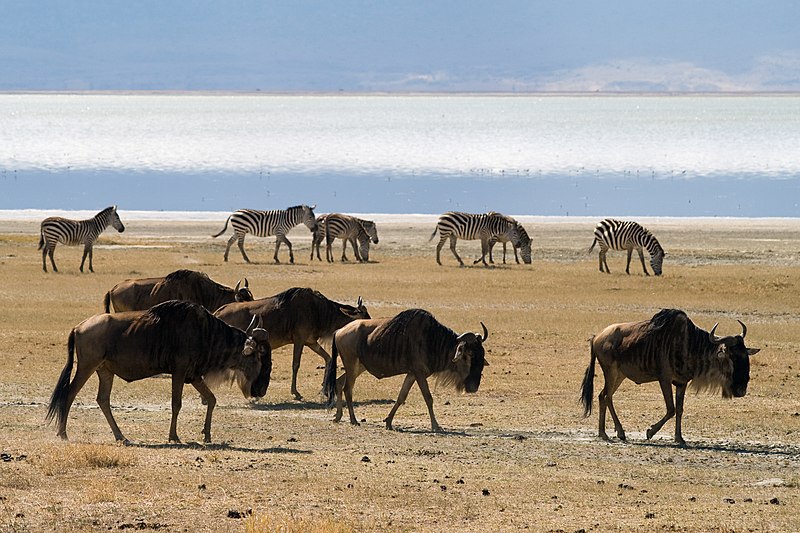

No comments:
Post a Comment